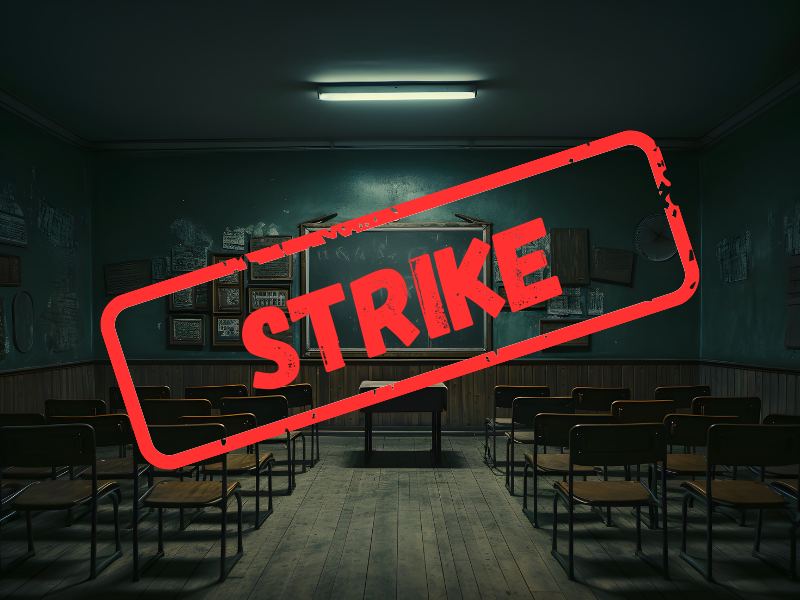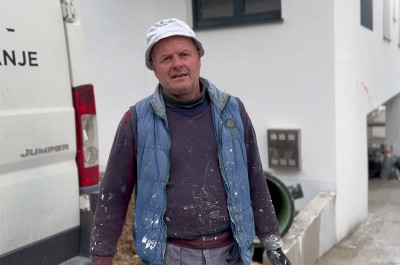A new wave of strikes is expected in primary and secondary schools, as well as universities in Croatia starting from Tuesday, April 1, 2025. This news has attracted public attention, with parents, students, and university attendees concerned, while the unions behind the strike emphasize that this measure is absolutely necessary.
Why is there a strike?
The strike is organized by three key educational unions: Independent Union of Secondary School Employees in Croatia, Independent Union of Science and Higher Education, and Preporod School Union. The main reason for the discontent is the salaries in the education sector, which, according to the unions, do not keep pace with the rising cost of living and lag behind other public services.
- Increase in the base salary and coefficients: The unions are demanding a 10% increase in the base salary (instead of the currently proposed 3+3%) and an adjustment of the coefficients for calculating salaries to align them with the responsibility and demands of jobs in education and science.
- Injustice in the system: Union representatives point out that salaries in education have risen slower than in other sectors, such as the judiciary, which recently saw significant increases. For instance, Željko Stipić from Preporod previously stated: "The fuel for our dissatisfaction is injustice."
- Additional demands: In addition to salaries, the unions are demanding protection of employees' status, postponement of reforms in vocational schools and modular teaching, and the systematization of jobs in science.
This strike comes after a series of protests and previous work stoppages in March 2025, when almost 37,000 workers in education went on strike in a single day, according to union data. The government claimed that salaries in education had increased by 30% in 2024, but the unions believe this is not enough.
How did the strike come about?
The path to this strike was paved by unsuccessful negotiations between the unions and the Government of Croatia. During February and March 2025, the unions attempted mediation with the government, but without success. A key moment was February 25, when the first mediation meeting was held, after which the unions announced that if there was no progress, they would move on to more serious actions.
- Protests as a warning: In March, protests were held in Ban Jelačić Square in Zagreb, where teachers and professors publicly expressed their demands. The government remained firm in its stance, claiming that salary increases had already been significant (80-100% since 2016, according to their statements), which further angered the unions.
- Decision to strike: After a one-day strike on March 19, the unions announced on March 20 that the next strike would be "longer and more serious." The union bodies made the decision for the strike to begin on April 1, which was confirmed at the end of March.
The Ministry of Science, Education, and Youth has stated that it sees no justification for the strike and has announced wage reductions for those on strike, which has further heightened tensions.
How long will the strike last?
The exact duration of the strike is still unknown, but the unions have given several indications:
- Long-term strike: Unlike the one-day strike in March, this time the unions have announced that the strike will last several days. Željko Stipić from Preporod said: "We are ready for a prolonged strike, maybe even progressive," meaning the intensity could increase day by day.
- Flexibility: The unions have not announced a specific end date, as they are waiting for the government's reaction. If negotiations begin during the strike, it is possible that the work stoppage will end earlier. Otherwise, the strike could last for weeks.
- Planned duration: According to earlier announcements, the strike could span the period from Monday to Friday (April 1-5), with the possibility of extension if the government does not yield.
Who is participating and how will it affect classes?
The strike will involve almost 1000 schools and universities across Croatia, including 93% of schools where the Preporod Union operates. In the previous strike, 340 out of 346 branches of the Independent Union of Secondary School Employees participated, and a similar turnout is expected this time.
- Students: The Ministry has announced that children and students will still have to attend schools and universities, where substitute classes will be organized for those who are not on strike. However, in many institutions, classes will be severely disrupted.
- National exams: If the strike coincides with key exam dates, it is possible that some exams will be postponed, as was the case in March when the exam was missed in 27 schools.
Reactions and what happens next?
The government, led by Prime Minister Andrej Plenković, insists that the strike is unnecessary and harms the students. On the other hand, the unions state that they will not back down until their demands are met. Labor law expert Viktor Gotovac supported the unions, saying: "Salary is absolutely a legitimate reason for a strike."
- Possible scenarios: If the government yields and offers greater concessions, the strike could end quickly. Otherwise, Croatia could enter a prolonged period of work stoppage in education, which could have broader consequences for society.
- Public opinion: Parents are divided – some support the teachers, while others are seeking a solution that will not disrupt their children's education.

 Croatia
Croatia Bosnia and Herzegovina
Bosnia and Herzegovina Serbia
Serbia Crna Gora
Crna Gora North Macedonia
North Macedonia Ukraine
Ukraine Albania
Albania Kosovo
Kosovo Austria
Austria Deutschland
Deutschland Switzerland
Switzerland









